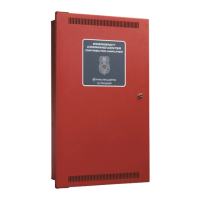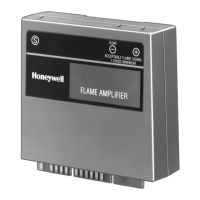
Do you have a question about the Honeywell Fire-Lite Alarms ECC-50DA and is the answer not in the manual?
| Power Output | 50W |
|---|---|
| Number of Channels | 1 |
| Input Voltage | 24 VDC |
| Operating Temperature | 32°F to 120°F (0°C to 49°C) |
| Humidity Range | 10% to 93% non-condensing |
| Frequency Response | 20 Hz to 20 kHz |
| Current | 2.5A (Maximum) |
Discusses system limitations and fire alarm/emergency communication system considerations.
Provides essential safety and installation guidelines for reliable operation.
Details on software downloads and providing documentation feedback.
General installation procedures for the ECC-50DA amplifier.
Identifies components and terminals on the ECC-50DA board.
Instructions for physically installing the ECC-50DA enclosure.
Guidelines for wiring to prevent noise and ensure signal integrity.
Connecting speakers using Class B (Style Y) or Class A (Style Z).
Connecting the audio riser for voice message transmission.
Connecting the amplifier to the system's data bus.
Procedure for connecting the AC power source.
Steps for connecting the backup battery.
Calculating power requirements and battery sizing.
General installation procedures for the ECC-125DA amplifier.
Identifies components and terminals on the ECC-125DA board.
Instructions for physically installing the ECC-125DA enclosure.
Guidelines for wiring to prevent noise and ensure signal integrity.
Connecting speakers using Class B (Style Y) or Class A (Style Z).
Connecting the audio riser for voice message transmission.
Connecting the amplifier to the system's data bus.
Procedure for connecting the AC power source.
Steps for connecting the backup battery.
Calculating power requirements and battery sizing.
Compliance information for low frequency sounder requirements.
General installation procedures for the ECC-50BDA amplifier.
Identifies components and terminals on the ECC-50BDA board.
Instructions for physically installing the ECC-50BDA enclosure.
Procedure for installing the optional backup amplifier module.
Guidelines for wiring to prevent noise and ensure signal integrity.
Connecting speakers using Class B (Style Y) or Class A (Style Z).
Connecting the amplifier to the system's data bus.
Configuring the amplifier mode using dip switches.
How to use test switches for amplifier diagnostics.
Procedure for connecting the AC power source.
Steps for connecting the backup battery.
Calculating power requirements and battery sizing.
Process for submitting and handling warranty claims.











